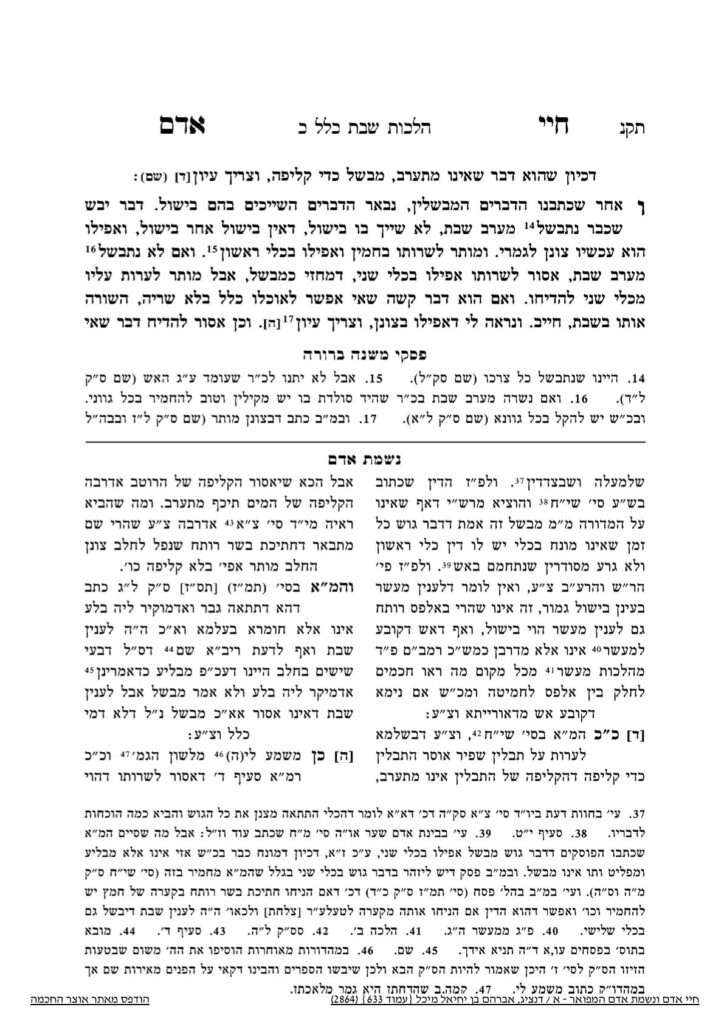We are beginning siman 7, and will begin with an introduction.
The Chayei Adam chooses an interesting order to these halachos. In siman 8, the Chayei Adam will write about the concept of yeish bishul achar bishul when it comes to a davar lach (something with liquid). Until now, we have been discussing davar yaveish. In other words, until now, we have learned that once an item is fully cooked, it does not change its halachic status, so reheating or recooking it is not bishul. On the other hand, something such as soup is a significant machlokes, and due to the machlokes, it is assur to reheat it. Although we pasken ain bishul achar bishul regarding a davar yaveish, we are machmir that yeish bishul achar bishul regarding a davar lach.
The Chayei Adam continues, and writes that there is also something in the middle. There are foods which are solids, but when they are heated, they liquify or melt. On the one hand, it could be considered a davar yaveish because when it was first placed on the source of heat, it was a solid. On the other hand, it could be considered a davar lach due to the result.
This last point, about how to understand a food in the middle, is the discussion of the Chayei Adam in siman 7. It is interesting to Rabbi Reingold that the Chayei Adam chose to place this middle scenario before defining a case of davar lach. Although it is a logical progression (davar yaveish-middle case-davar lach), seeing that we have not yet learned the concept of davar lach (since it is not defined until siman 8), it is an interesting choice.
In siman 7, the Chayei Adam writes that some hold that it is muttar to heat a davar yaveish, which was previously cooked, which will become a liquid when placed by a fire. According to them, since it is fully cooked, and solid at the time it is placed near the heat source, it is considered a davar yaveish.
Thus, for example, instant coffee is previously cooked and dehydrated. When it is placed into water, it dissolves into a liquid. At this point in the Chayei Adam, it would seem muttar to dissolve the coffee in hot water (ie, even into a kli rishon). Similarly, the Chayei Adam writes it would be muttar to place salt or sugar previously cooked (see shiur s512) directly into a kli rishon, because ain bishul achar bishul by a davar yaveish. The Chayei Adam gives another example of a fully cooked pastida (a form of knish) which had fat in it. He writes that accoridng to this opinion, it is muttar to place it next to the fire to allow for the fat to melt. (It cannot be placed directly on the fire due to the concern of chazara, as we have discussed [shiur s037].)
The above paragraph is based on the first opinion brought by the Chayei Adam. We will see the next opinion in the upcoming shiur, be’ezras Hashem.
Summary
- It is a machlokes whether a food which begins as a fully cooked davar yaveish but which will liquify when one recooks it is considered a davar lach or a davar yaveish. The first opinion holds it is considered a davar yaveish, since we follow the time at which it was placed next to the source of heat.



